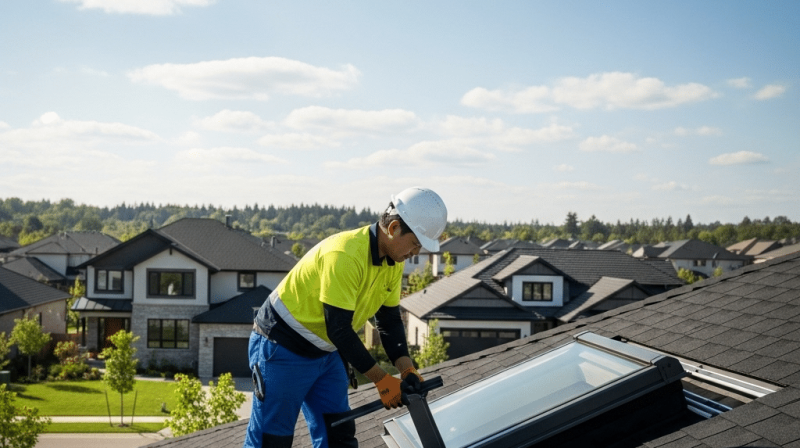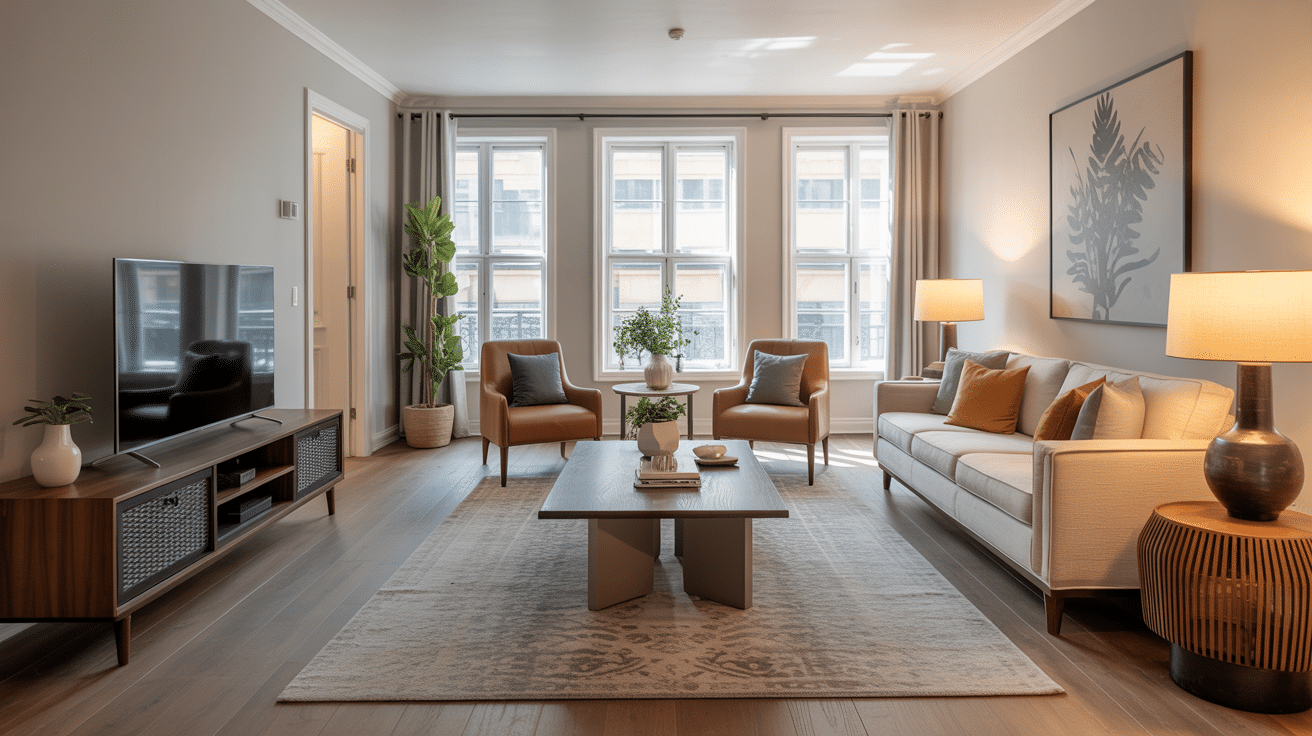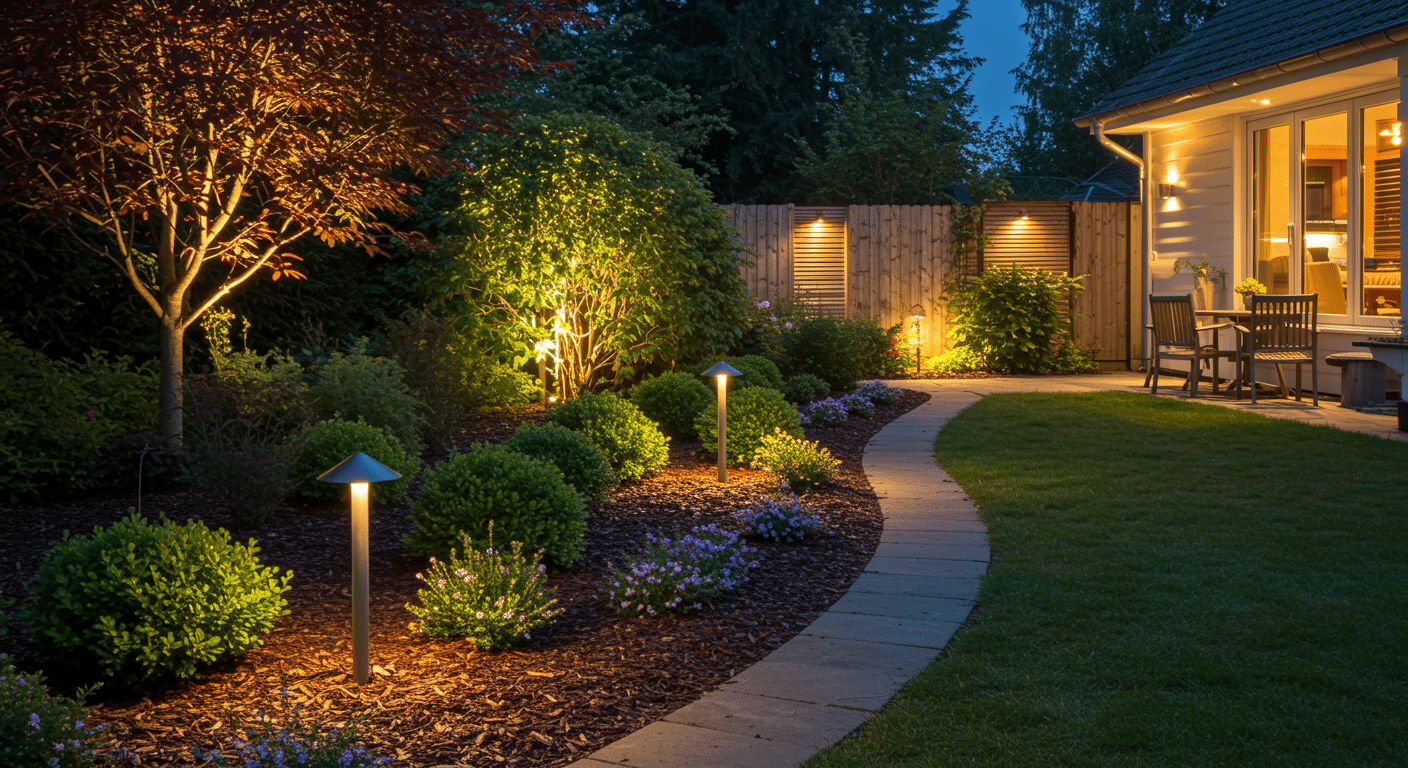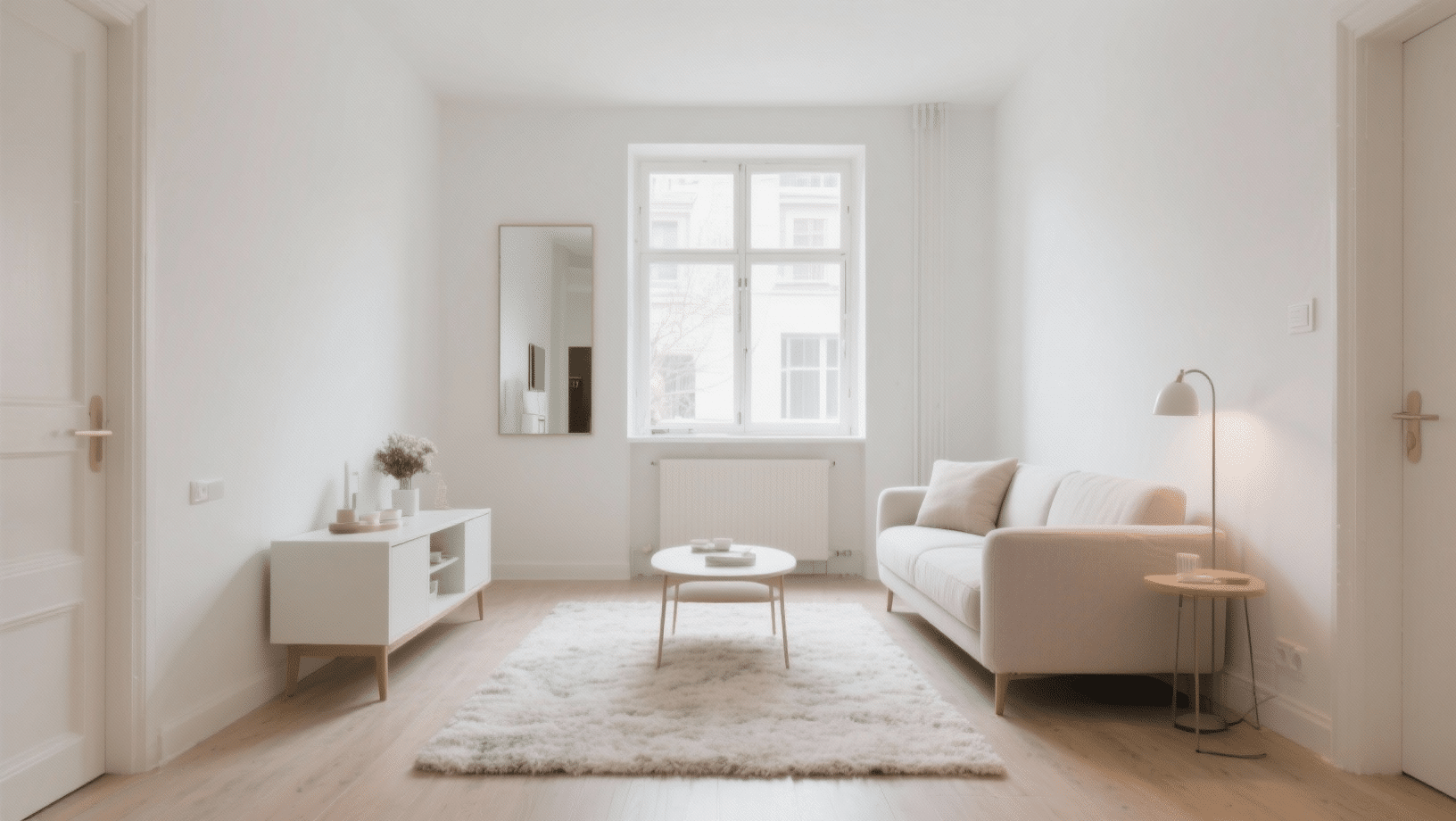Last month, I helped my cousin research skylight options for her kitchen. She was stressed about the costs and had no idea where to start.
Sound familiar? Most homeowners get overwhelmed by conflicting price quotes and hidden fees. You see one contractor quote $800, another says $3,000, and you’re left wondering what’s realistic.
The most surprising thing is that the actual skylight unit often costs less than half of your total project budget.
So in this blog, I’ll walk you through the real skylight installation cost, show you what drives prices up or down, and help you budget smartly for your skylight project.
How Much Does Skylight Installation Cost in 2025?
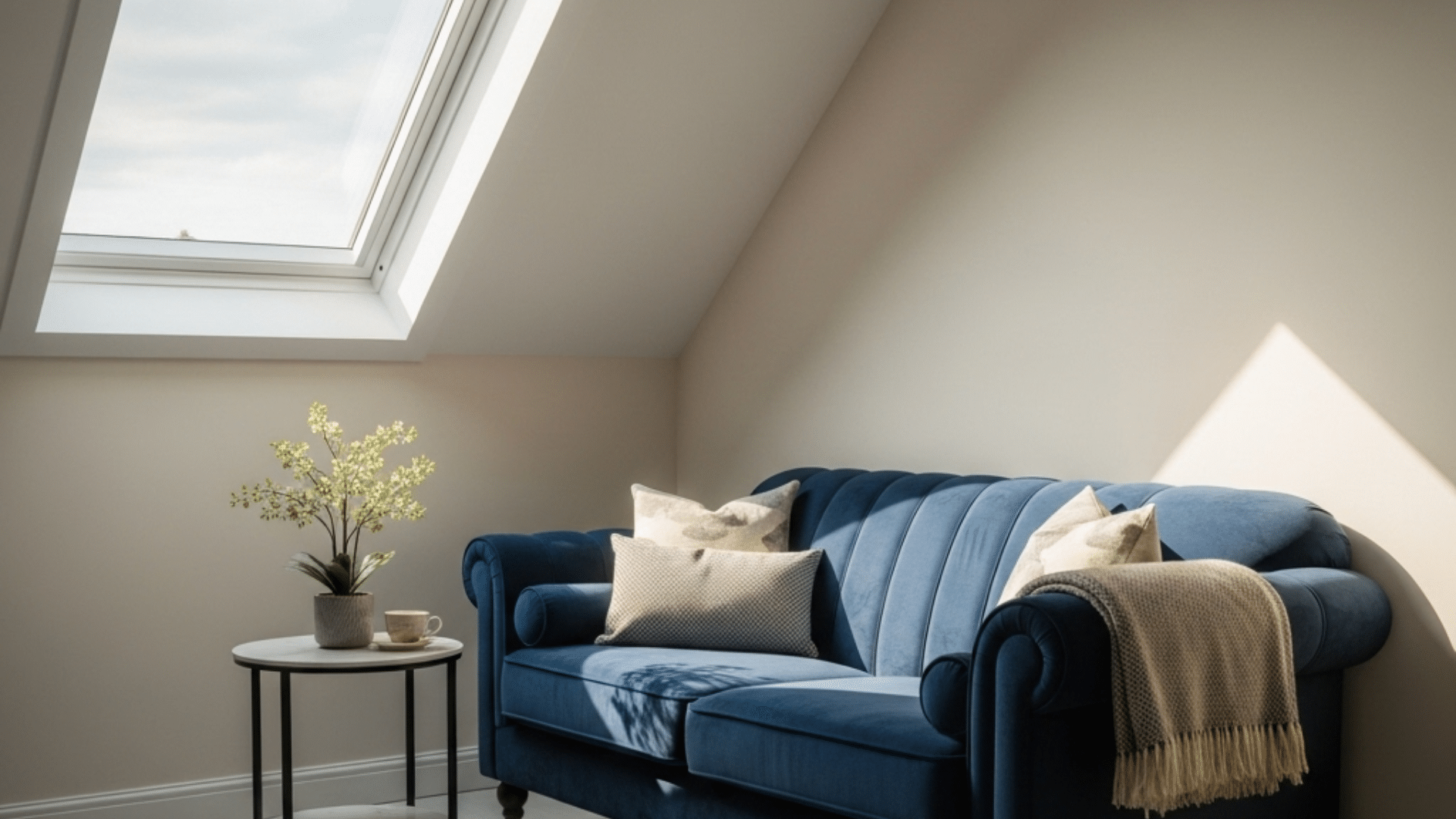
Let me provide you with the actual numbers based on my observations in the market this year. Nationally, most homeowners spend between $1,200 and $4,500 for a complete skylight installation cost.
The wide price range comes down to three factors: skylight type, roof complexity, and finishing work.
A basic fixed skylight in a simple roof might cost $1,200, while a motorized venting skylight with fancy trim work can hit $6,000 or more.
Here’s how the costs break down:
| Cost Category | National Average | Typical Range | Low-End | High-End |
|---|---|---|---|---|
| Total Project | $2,800 | $1,200 – $4,500 | $800 | $6,500 |
| Skylight Unit | $450 | $200 – $800 | $150 | $1,500 |
| Installation Labor | $1,200 | $600 – $2,000 | $400 | $3,000 |
| Additional Materials | $350 | $150 – $600 | $100 | $900 |
What Skylight Installation Involves?
Many homeowners worry that skylight installation will turn their home into a construction zone for weeks. The truth is, most installations take just 1-2 days when done by experienced contractors.
1. Site inspection and planning: Your contractor checks the roof structure, measures the space, and confirms the best location for maximum light.
2. Roof and structural evaluation: They make sure your roof can handle the skylight weight and check for any structural issues.
3. Cutting openings: Careful marking and cutting of both the roof and ceiling creates the skylight opening.
4. Framing and waterproofing: New framing supports the skylight while flashing and sealants prevent water leaks.
5. Skylight installation: The actual skylight unit gets placed, secured, and sealed to the roof.
6. Trim and finishing work: Interior and exterior trim pieces complete the look and hide rough edges.
7. Final cleanup and inspection: Debris removal and a thorough check ensure everything works properly.
Top Factors That Affect Skylight Installation Cost
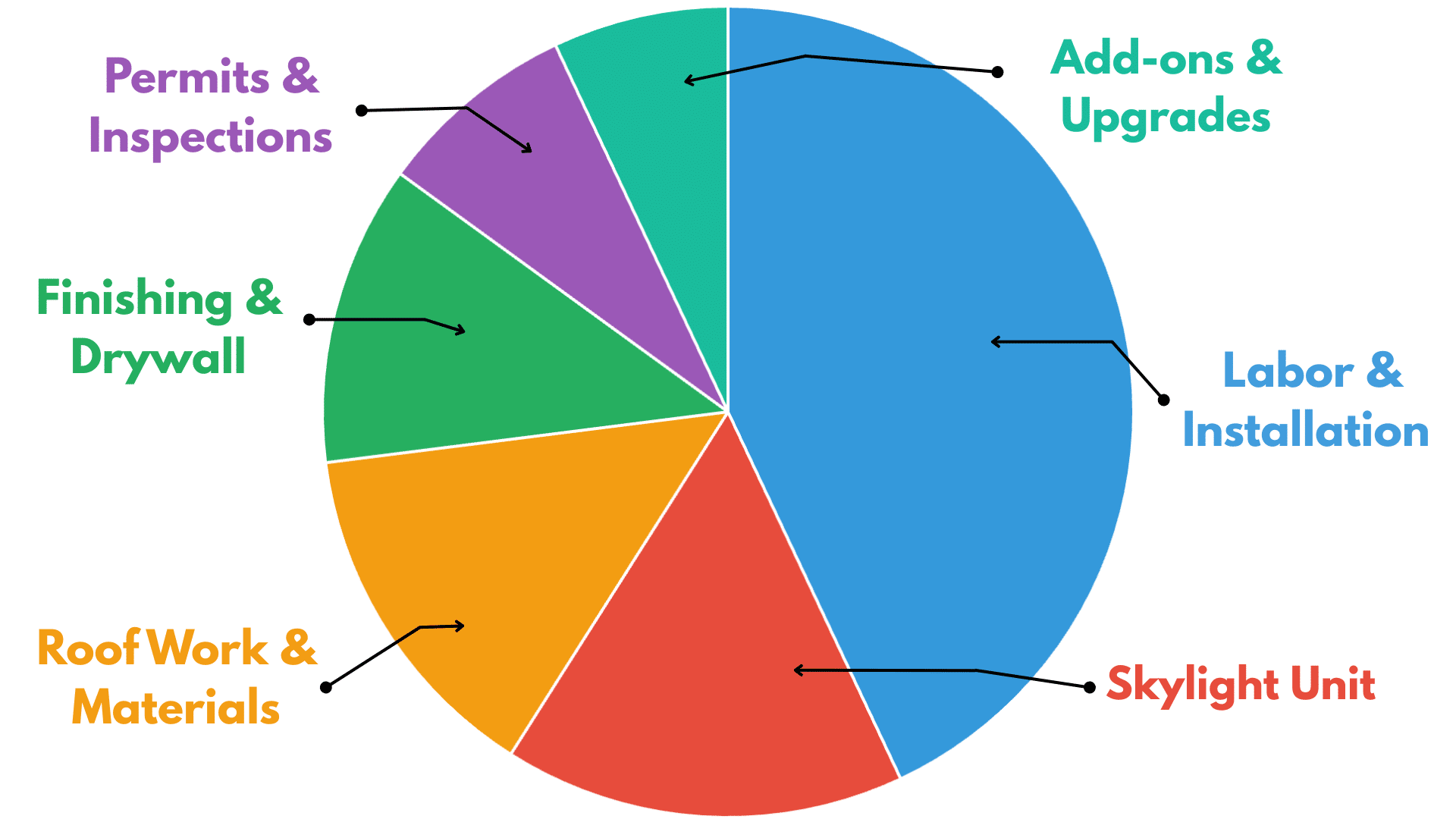
After helping some homeowners with skylight projects, I’ve noticed the same cost drivers come up every time. Your final bill depends on six main factors, and understanding these helps you budget better.
Consider your total skylight installation cost, which is approximately $2,800. Each of the six factors takes a slice of that budget.
Here’s how the typical breakdown looks and why each one matters:
- Type and size of skylight: Fixed units cost less than venting or tubular options.
- Roof pitch and materials: Steep roofs and tile/slate add complexity.
- Local labor rates: Costs can run 15–20% above the national average in some regions.
- Installation complexity: Multi-story homes and tough roof access increase labor time.
- Add-ons: Energy-efficient glass, smart features, and motorized shades boost costs.
- Permits and finishing: City fees and drywall work often get overlooked.
Choosing a Skylight: Types and Cost Breakdown
I always start by explaining the three main types of skylights to the people.
Fixed skylights are the simplest and cheapest option – they just let light in. Vented skylights open and close for fresh air, while solar-powered ones operate automatically with built-in motors.
Your choice here makes the biggest difference in your final cost.
Fixed Skylight Cost by Size
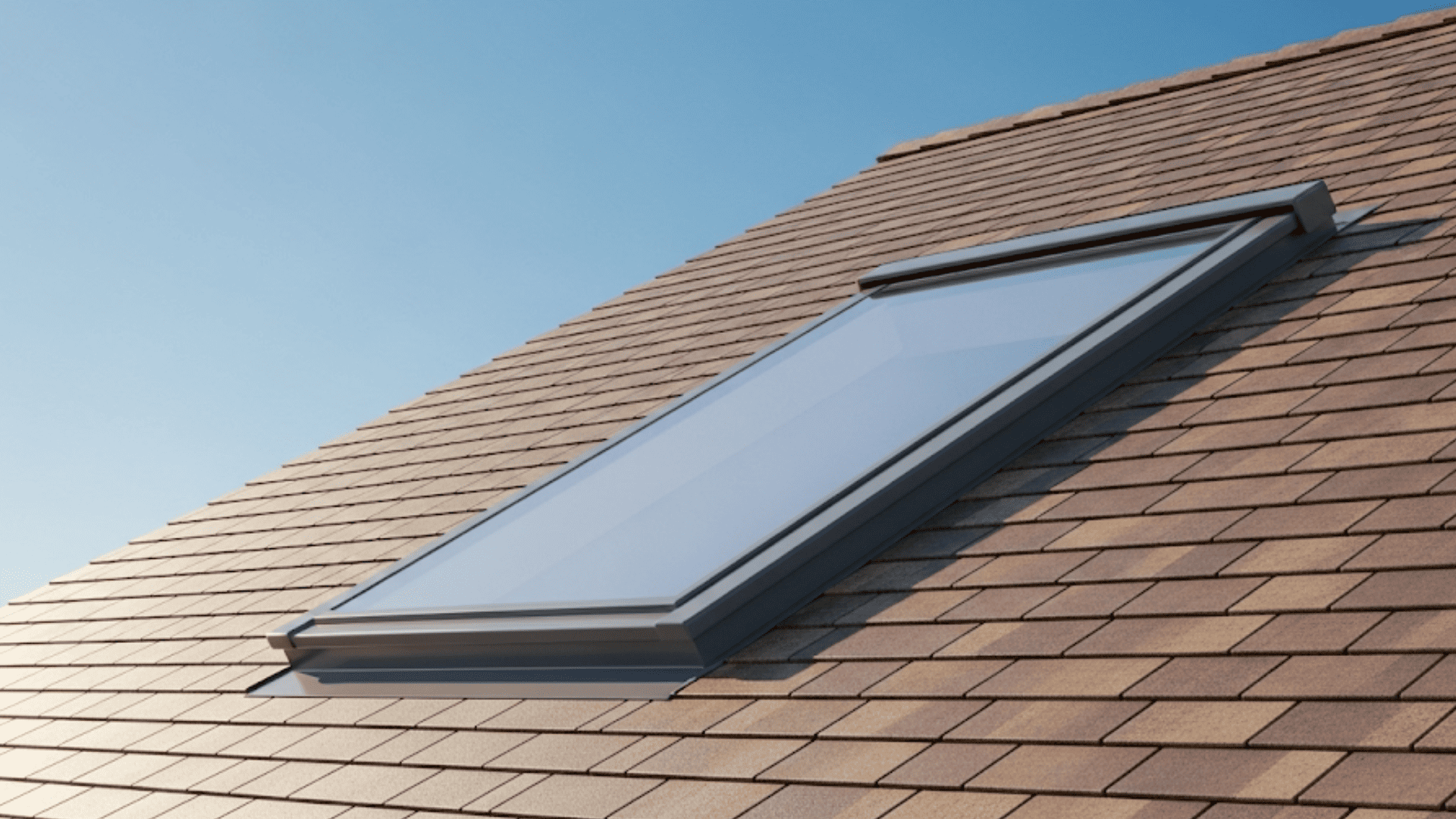
Fixed skylights are perfect if you only want more natural light. They’re sealed units with no moving parts, making them the most budget-friendly choice. Installation is straightforward since there’s no electrical work needed.
| Size | Average Cost |
|---|---|
| Small | $500 – $1,000 |
| Medium | $900 – $1,800 |
| Large | $1,500 – $2,500 |
Vented Skylight Cost by Size
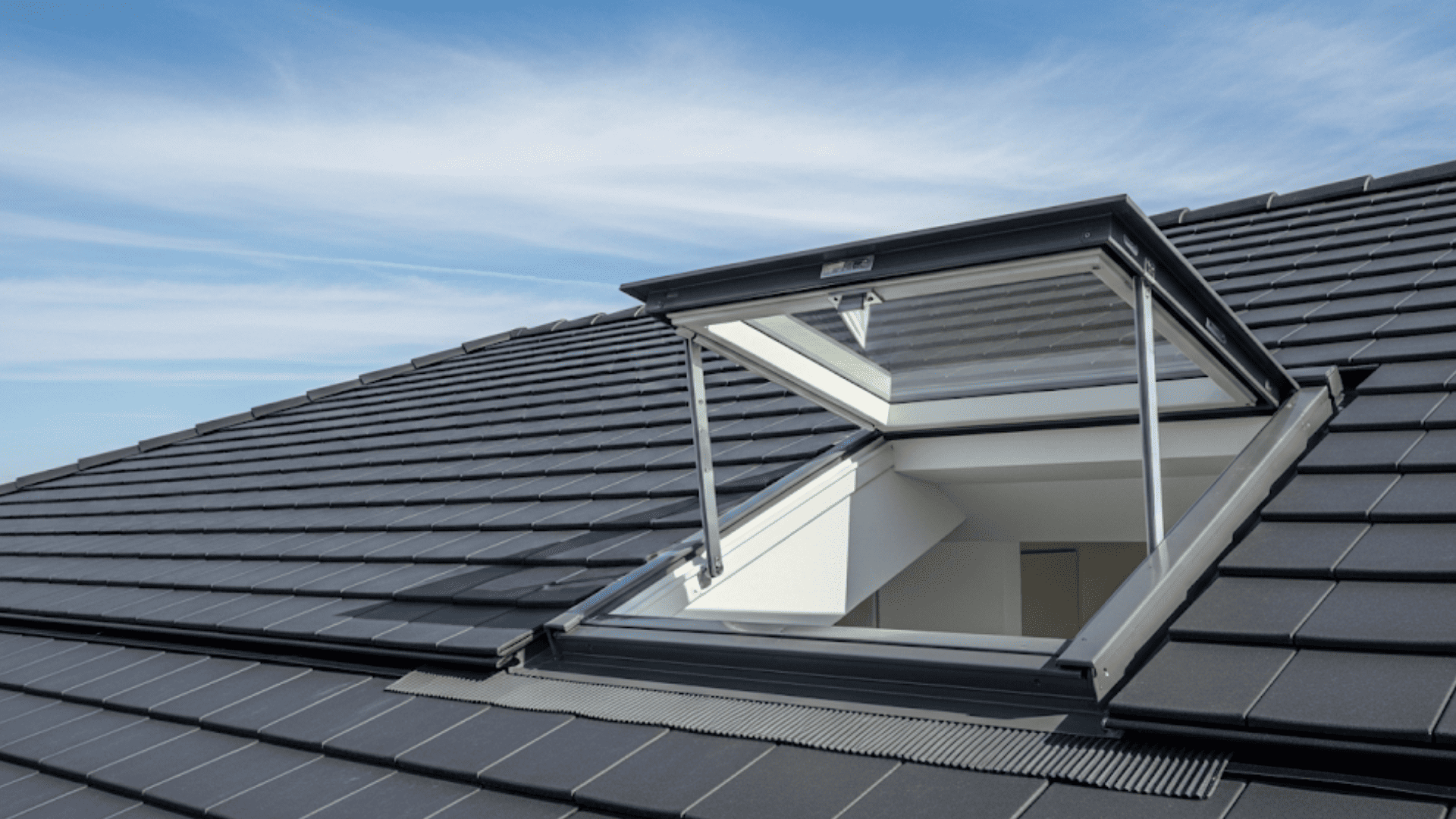
Vented skylights let you control airflow and reduce heat buildup. They cost more because of the opening mechanism and weatherstripping requirements.
| Size | Average Cost |
|---|---|
| Small | $800 – $1,400 |
| Medium | $1,200 – $2,200 |
| Large | $2,000 – $3,000 |
Solar-Powered Skylight Cost by Size
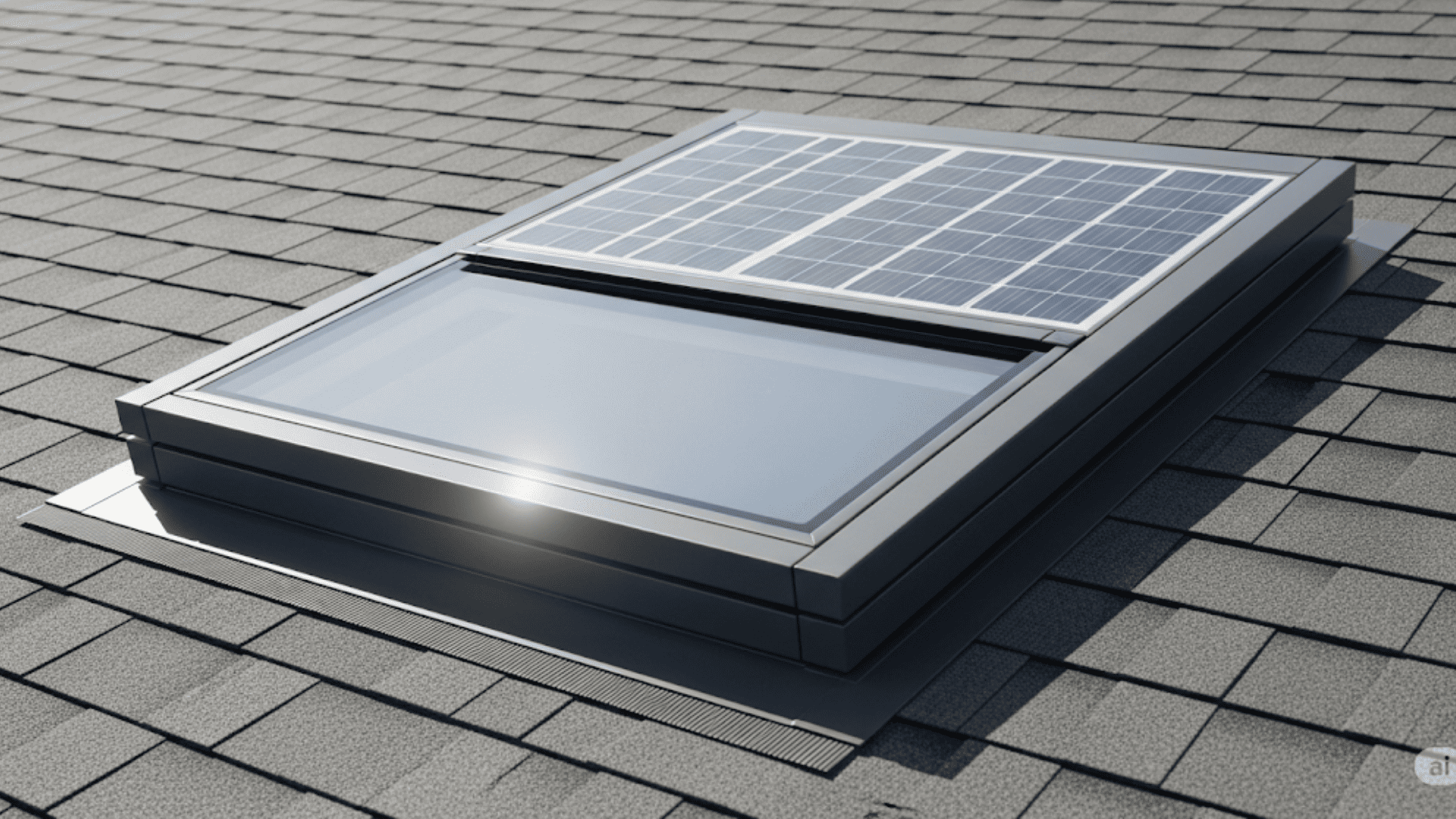
Solar-powered units offer convenience with automatic rain sensors and remote controls. The higher price reflects the motor and electronic components.
| Size | Average Cost |
|---|---|
| Small | $1,200 – $2,000 |
| Medium | $2,000 – $3,500 |
| Large | $3,000 – $4,100 |
DIY vs. Contractor: What’s Best for Skylight Installation?
I get asked about DIY skylight installation frequently. Sure, you can save $1,000-$2,500 on labor costs, but here’s what most people don’t realize, one small mistake can cost you thousands more in water damage repairs.
DIY installation requires serious carpentry skills, roofing experience, and specialized tools like reciprocating saws, flashing materials, and safety equipment. You’ll need to cut precise openings in your roof and ceiling, install proper framing, and create waterproof seals.
I always tell clients that hiring a licensed contractor protects you in three ways: proper code compliance, warranty coverage, and insurance protection. The $1,500 you save on DIY isn’t worth the $10,000+ you might spend fixing water damage later.
Effective Ways to Minimize Skylight Installation Cost
Nobody wants to overpay for their skylight project. I’ve seen homeowners save $500-$1,500 just by being smart about timing and choices.
The key is knowing where contractors have flexibility in their pricing and when demand is lower. By following these tips you can save money on skylight installation cost.
- Compare multiple contractor quotes: Get at least three bids, especially in Seattle where prices vary widely between contractors. Don’t just pick the cheapest – check reviews and licenses too.
- Opt for standard sizes and models: Custom skylights cost 40-60% more than standard sizes. Stick with common dimensions like 22″x46″ or 30″x54″ to keep costs down.
- Install during off-peak seasons: Schedule your project in fall or early spring when contractors offer better rates. Avoid summer when everyone wants roofing work done.
- Look for rebates and energy efficiency credits: Many utility companies offer rebates for energy-efficient skylights. Check your local programs before buying.
- Bundle with other projects: Installing skylights during a roof replacement or major renovation can save you setup costs and labor fees.
Final Thoughts
Planning your skylight installation cost doesn’t have to be stressful.
Now you know exactly what drives those prices up or down. The size, type, and installation complexity are the factors that make the biggest difference in your final bill.
Here’s what matters most: get multiple quotes, stick with standard sizes, and hire licensed contractors. Yes, you’ll pay more upfront, but you’ll avoid the expensive water damage repairs I see too often with DIY jobs.
Ready to move forward with your skylight project? I’d love to hear about your experience!


